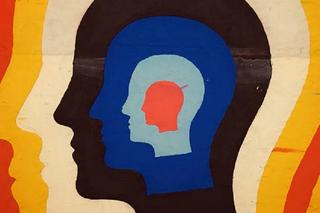
Do Audio Drugs Really Get You High?
Binaural beats may trick your brain but they don’t exactly make you trip.

Drug dealers are no longer on the streets; purveyors of ‘audio drugs’ claim they can replicate the effects of cocaine, LSD, and ecstasy, as well as a host of other experiences, simply through a digital sound recording. I-Doser Labs, the leading producer of these experiences, offers CD, MP3, and computer and mobile-based doses, promising a scientific and safe way to synchronize your brain waves and achieve an altered state of being. While these digital drugs have had some pushback from people who see it as a kind of gateway encouraging actual drug usage, I-Doser’s 10 million users prove that this internet trend is not dying out anytime soon.
But has I-Doser really figured out a way to get people high off an audio recording? Not really. Their product is essentially a form of ‘binaural beat therapy’ and that’s been around for a while. Discovered by Heinrich Wilhelm Dove in 1839, a binaural beat is experienced when two constant tones are played at different frequencies in each ear. Picture two different vibrating waveforms entering your left and right ears and meeting in your brain, which then creates a synchronized version of the two, at a completely different frequency — the binaural beat. There has been some research that show binaural beats can trigger EEG activity and affect mood and sleep cycles, but the claim that it can reproduce the effects of acid? Probably not as scientifically valid. I-Doser claims that the specialized doses will match “the intended Hertz level that your brain would be at while having the chosen experience,” but there have been no formal studies proving that this has any scientific basis, and most researchers treat the trend with skepticism at best.
However, the combination of our cultural curiosity about altered consciousness and experimentation with drugs, and the vast wonders of the internet (where YouTube reaction videos have teens swearing they’ve had an out-of-body experience) mean that the lack of rigorous scientific proof doesn’t necessarily sway us from the promise of audio drugs. So I decided to check out what I-Doser had to offer, and see if the claims would actually hold up.
To be clear, the website’s extensive catalog offers a lot more than drugs — there are tracks to induce lucid dreaming, purify your aura, meditation packs, and a whole line of sexual doses (you can overdose on a track titled ‘orgasms’ if you’d like). Most are priced at US$8 to US$9, and provide 10-second samples, along with an informational guide about how to ensure the most effective experience. If this seems like a half-baked marketing ploy, though, it’s clear that the people running I-Doser take themselves very seriously. I-Doser claims to offer the most effective binaural doses available anywhere, put together by experts who mix beats and audio recordings to create unique experiences.
According to the website, more than 80 percent of users have felt the effects of a dose at least once, with 35 percent feeling it every time and 29 percent almost every time. Only 17 percent felt no effect, which is written off due to poor quality headphones or a disruptive environment. With this in mind, I pulled out my two-year-old headphones from their home at the bottom of my bag, and untangled them skeptically, ready for whatever the hell this experience would be.
Related on The Swaddle:
YouTube Is Bursting With Videos Meant to Give You Brain Orgasms
I decided to try out the starter dose (staying away from auditory overloads like ayahuasca and oxycontin), which is a shorter version of the hour-long tracks. The drugs on offer were acid, cocaine, ecstasy, and marijuana. Every track, it seems, has a base layer of beats that are barely perceptible over the other sounds added to it. But I’m guessing it’s this constant, low frequency that I can hear humming on every dose, kind of like an ambient white noise, that is doing the work of confusing my brain and creating the binaural beat.
The acid track had layers of mellow sounds interrupted by what seemed to be a recording of a radio conversation about going into space? It was weird, but also strangely calming, and the talking actually did function in a way that made the experience more visual. The marijuana track, on the other hand, had a louder layer of white noise, almost to the point of being annoying. But it also had some pleasant nature sounds — I say nature sounds because I couldn’t quite figure out whether I was listening to grasshoppers,, or rain or someone who’s blowing over a glass bottle to make that nice sound. I stopped the ecstasy track mid-way out of surprise because I definitely heard a woman scream (I think out of pleasure?), and the cocaine track had some great beats that made me want to dance, but not for too long. Overall, the experience was interesting. I felt dizzy and weird and wired — my sonic bender felt like a fun way to spend an evening, but it wasn’t really the mind-altering experience that was promised.
Maybe what many people feel is a result of the placebo effect, or maybe just the intensity of listening to binaural beats in a dark room for an extended amount of time, but — let’s be honest — audio drugs don’t quite compare to the real stuff. On the other hand, actual drugs are illegal and also dangerous, so I-Doser and its competitors seem to offer a pretty harmless experience. It’s cheaper, safer, easier, and possibly a way for teenagers to satisfy their curiosity in a way that won’t put them in danger. And hopefully the only harder stuff they’ll turn to is Philip Glass or Pink Floyd.
Nadia Nooreyezdan is The Swaddle's culture editor. Since graduating from Columbia Journalism School, she spends her time thinking about aliens, cyborgs, and social justice sci-fi. She's also working on a memoir about her family's journey from Iran to India.
Related


Screen Time Begets Screen Time, Researchers Say
